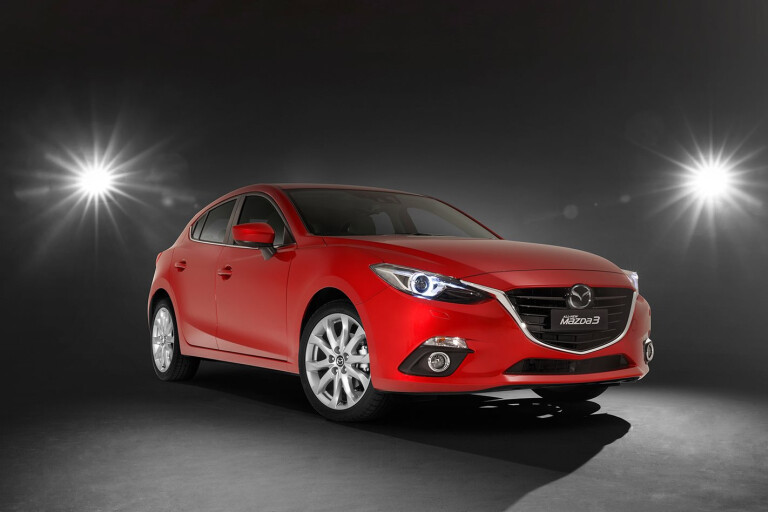
FORGET the new year hangovers and stratospheric Christmas credit card bills because 2015 is shaping up to be the best yet for buying a new car.
New cars look set to be cheaper than ever in 2015 thanks to the introduction of free trade agreements with Japan and South Korea. Each eliminates the 5 percent import tariff applied to the price the car maker pay to import a car (as opposed to the retail price).
The Japanese FTA doesn’t come into force until January 15 while the Korean one came quietly into effect in December 2014, albeit with no price changes from Hyundai and Kia.
But already Japanese carmakers are reacting with revised pricing that could instigate movements by brands importing vehicles from other countries.
Hot on the bumper of Subaru last year – which reduced prices of its new Liberty and Outback by up to $14,000 – Toyota and Mazda have slashed prices to account for the eliminated or reduced import tariffs.
Mazda prices have been reduced by 2.5 percent on most petrol-powered models imported from Japan – the 3, CX-5 and 6 – while diesel models and the V6-powered CX-9 have enjoyed price cuts of between 0.8 and 0.9 percent, with more savings expected as the stepped tariff lowering on some models is finalised in April.
Toyota’s pricing changes are more convoluted and represent a substantial repositioning of some models.
The popular 86 sports car, for example, is unchanged, still priced from $29,990. The soon-to-be-repositioned Prius C is another that has not been adjusted for the revised tariff.
Like Mazda, Toyota has models unaffected by the tariff reduction; the Hilux and Kluger are imported from Thailand and the US, for example, while the Camry and Aurion are built in Australia.
But the more expensive four-wheel-drive models, such as Prado and LandCruiser, have enjoyed significant price reductions of up to $7630, or 8.3 percent – well in excess of an anticipated 3.0 percent retail price reduction.
While Corolla sedans are unaffected (they’re imported from Thailand), the Corolla hatch has enjoyed price reductions of between 1.8 and 3.8 percent. The recently upgraded Yaris is also now between 3.7 and 5.3 percent more affordable.
The chief executive of the Federal Chamber of Automotive Industries, Tony Weber, expects the price reductions on Japanese models to flow through to other brands forced to reduce their margins to compete with the repositioned models imported from Japan.
“The FTA is obviously going to reduce the car the price the car is landed in Australia and I think will most likely affect prices in Australia is the competition in the market,” said Weber. “There are 67 brands here and they’re all after the buyers’ dollars so therefore they’re pushing down prices.”
However, industry experts warn currency fluctuations could send some prices the wrong way. Already Korean car makers have dealt with slimming margins as the Australian dollar weakens, but importers from Japan have been cushioned by a week Japanese yen.
Despite the introduction of the Korean FTA neither Hyundai nor Kia has reduced prices, with each likely to add more equipment and/or increase margins.
“We’re going to add some value for the cars in terms of specification and equipment,” said Hyundai Australia public relations general manager Bill Thomas. “There are constant fluctuations in the exchange rate, but we don’t necessarily adjust our prices to match that.”
Despite the significant repositioning and price reductions, Toyota Australia executive director of sales and marketing Tony Cramb doesn’t expect it to boost sales.
“Given how competitive the market is, we don’t actually expect that our pricing changes will give us a competitive advantage – it will just become the new position in the marketplace.”
Cramb effectively confirmed that the 86 and Prius C would pick up more equipment in coming weeks by stating that all cars from Japan would benefit from improved value.
The FTA price adjustments are more bad news for Australian car makers, which in 2014 experienced record low sales, accounting for just 9 per cent of the 1.1 million vehicles sold.
Toyota and Mazda new car price changes: a snapshot
| Model | Old price* | New price* | Reduction | Change (%) |
| Toyota Yaris Ascent | $15,690 | $14,990 | -$700 | -4.50% |
| Toyota 86 GT | $29,990 | $29,990 | $0 | 0.00% |
| Toyota Corolla Ascent Sport | $21,290 | $20,490 | -$800 | -3.80% |
| Toyota Prado Kakadu diesel | $92,120 | $84,490 | -$7,630 | -8.30% |
| Toyota RAV4 4WD GXL petrol | $38,190 | $36,990 | -$1,200 | -3.10% |
| Toyota LandCruiser GXL diesel | $89,165 | $83,990 | -$5,175 | -5.80% |
| Mazda3 Maxx auto | $24,990 | $24,370 | -$620 | -2.50% |
| Mazda3 SP25 Astina | $36,190 | $35,290 | -$900 | -2.50% |
| Mazda3 Astina XD diesel | $40,230 | $39,890 | -$340 | -0.80% |
| Mazda6 Atenza petrol | $47,210 | $46,030 | -$1,180 | -2.50% |
| Mazda CX-5 Maxx petrol auto | $29,880 | $29,130 | -$750 | -2.50% |
| Mazda CX-5 Akera diesel | $49,420 | $49,000 | -$420 | -0.80% |
| Mazda CX-9 Grand Touring | $62,745 | $62,210 | -$535 | -0.90% |
* Prices are manufacture list prices and exclude on-road and dealer costs

COMMENTS